Google Nexus 6P review: king of the Android phablets?
How does the Nexus 6P measure up against the likes of LG and Samsung's flagships?
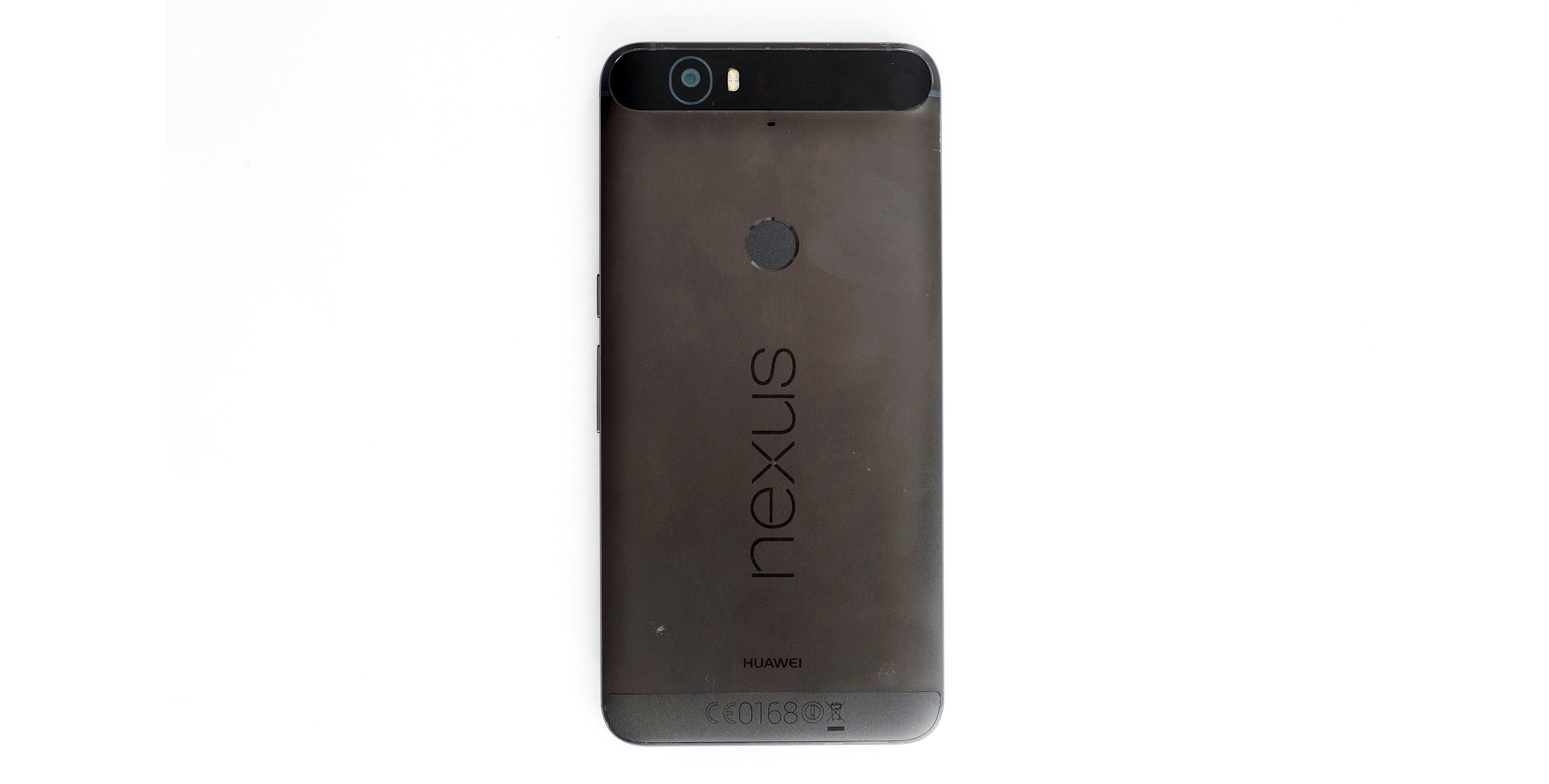

High quality throughout, the Nexus 6P is a good showcase for Android 6.0 Marshmallow
-
+
Sharp, good quality screen; Great fingerprint scanner; Fast performance; Solid camera
-
-
Slightly oversaturated screen colours; Camera software could be better
Launching back in December 2015 alongside the smaller Nexus 5X, the Nexus 6P was a vast improvement over its predecessor, theNexus 6. With its premium metal body, USB-C port for fast charging and excellent 5.7in display, it's a far more accomplished phone than the Nexus 6, and a lot more attractive, too. Of course, since the phone was released, we've had this year's flagship handsets arrive, particularly the Samsung Galaxy S7. While the Nexus 6P might not quite have the performance of this new phone, or quite the same battery life, that doesn't mean that you should ignore it, as it has a few important advantages.
First, the price has come down quite a lot and you can pick up some bargains on contract, with very little upfront cost. Secondly, the phone's main advantage is that it runs stock Android, which means it's one of the first to get the latest Android updated. In fact, you can already download the developer preview of Android N for it. For many people, it's this upgradeability that makes the Nexus line-up so attractive. So, before you buy a flagship phone from another manufacturer, it's worth reading about what the Nexus 6P can do.
Latest News
29/06/2016:Google may be planning to release its own smartphone, a departure from the company's previous method of using Samsung, LG or Huawei hardware for its Android operating system.
The rumoured move could indicate that Google wishes to move beyond software into manufacturing, most likely to compete with Apple's iPhone in the hardware space.
Ben Wood, an analyst at CCS Insight, told The Telegraph: "They are concerned that Android is fragmenting, that it needs to become a more controlled platform. I think they'll seek to control more of it, more like Apple."
Screen
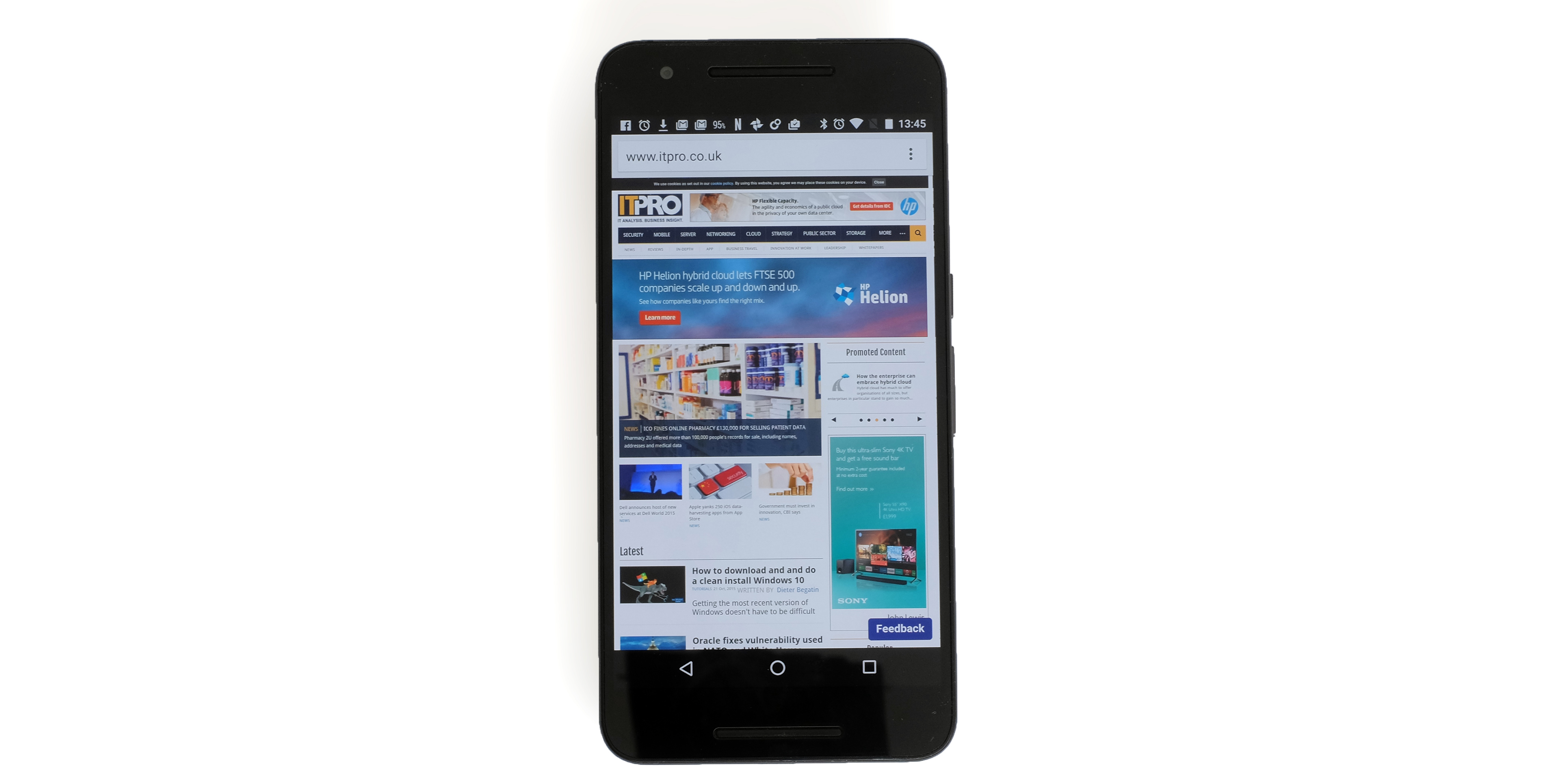
The 6P has retained the 2560 x 1440 resolution of its predecessor, but Huawei has chosen to bump the screen size up to 5.7in. It loses a little pixel density as a result, but that's not really an issue here.
The display is incredibly sharp, in spite of the PenTile sub-pixel structure employed by the panel, and the contrast is impeccable. Brightness is also superb; it suffers a little in comparison with the Galaxy Note 5and Galaxy S6 Edge Plus, but not enough to have any real effect.
There's a very slight blue-green shift when placed at extreme angles, but other than that, the viewing angles are faultless. There is, however, a problem with oversaturation.
A common issue with phones like the 6P that use OLED panels, it's similar to Samsung devices' default 'Adaptive' setting. Unfortunately, there's no way to bump it back down to a more natural level. On the bright side, colour accuracy is improved over the Nexus 6.
Camera
The Nexus 6P does not have a megapixel-chasing camera. Its main sensor measures 1/2.3 of an inch, the largest found in phones outside of the old Nokia PureView range, with a resolution of 12.3 megapixels and a wide aperture of f2.
This lets the Nexus 6P maintain fairly good image quality regardless of (most) light conditions, even though the phone does not have optical image stabilisation. Large 1.55-micron sensor pixels help it keep noise levels reasonable in lower light withoutextremelyobvious noise reduction. Plus, it means the camera doesn't have to drop down to its slowest 1/10 second shutter speed until the light level is really dark.
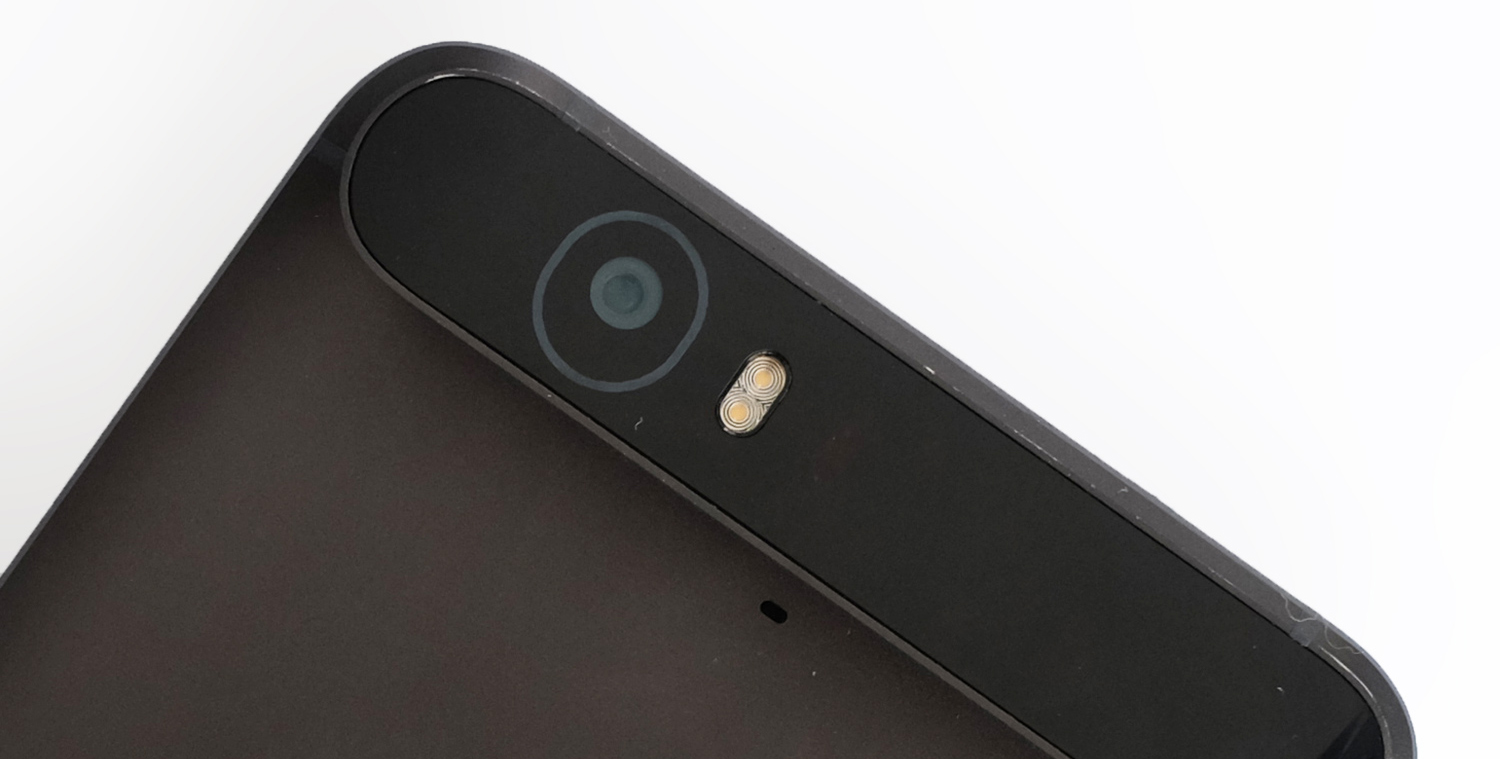
Colours in photos are rich, with none of the tone clipping you get in some cheap 13-megapixel sensors, while the quality f/2.0 lens allows for some pleasant shallow depth of field effect shots when shooting close-up subjects. The Nexus 6P has a very nice camera, with images that hold up better than a lot of higher-resolution rivals. However, the software running the show needs to be smarter.
Only minor tweaks have been made to the Google Camera app, bunging HDR and flash controls into the top-right of the otherwise-dated UI.
The metering system reverts to spot-metering as soon as a subject is selected, with much less intelligent consideration for the rest of the scene than the iPhone 6S and Samsung Galaxy S6. When the Nexus 6P is left to judge the scene on its own, it tends to be a little conservative in trickier conditions too, meaning its shots can often benefit from post-shoot tweaking to bring up the brightness a little.
The Auto HDR mode is also not a patch on that of LG and Samsung, taking too long to process shots and with results that aren't as good. However, the Nexus 6P does shoot slo-mo video, shooting at either 150fps or 240fps. Unlike stills, video is stabilised, but using a software method that crops the image, using its outer parts as a buffer.
Despite all this, shooting with the Nexus 6P's camera still produces generally pleasing results. The front camera is good too with a large eight-megapixel sensor producing sharper, clearer images than any of the other 2015 flagships.
Performance
The Nexus 6P has a Snapdragon 810 eight-core processor, just like the Sony Xperia Z5 and HTC One M9.
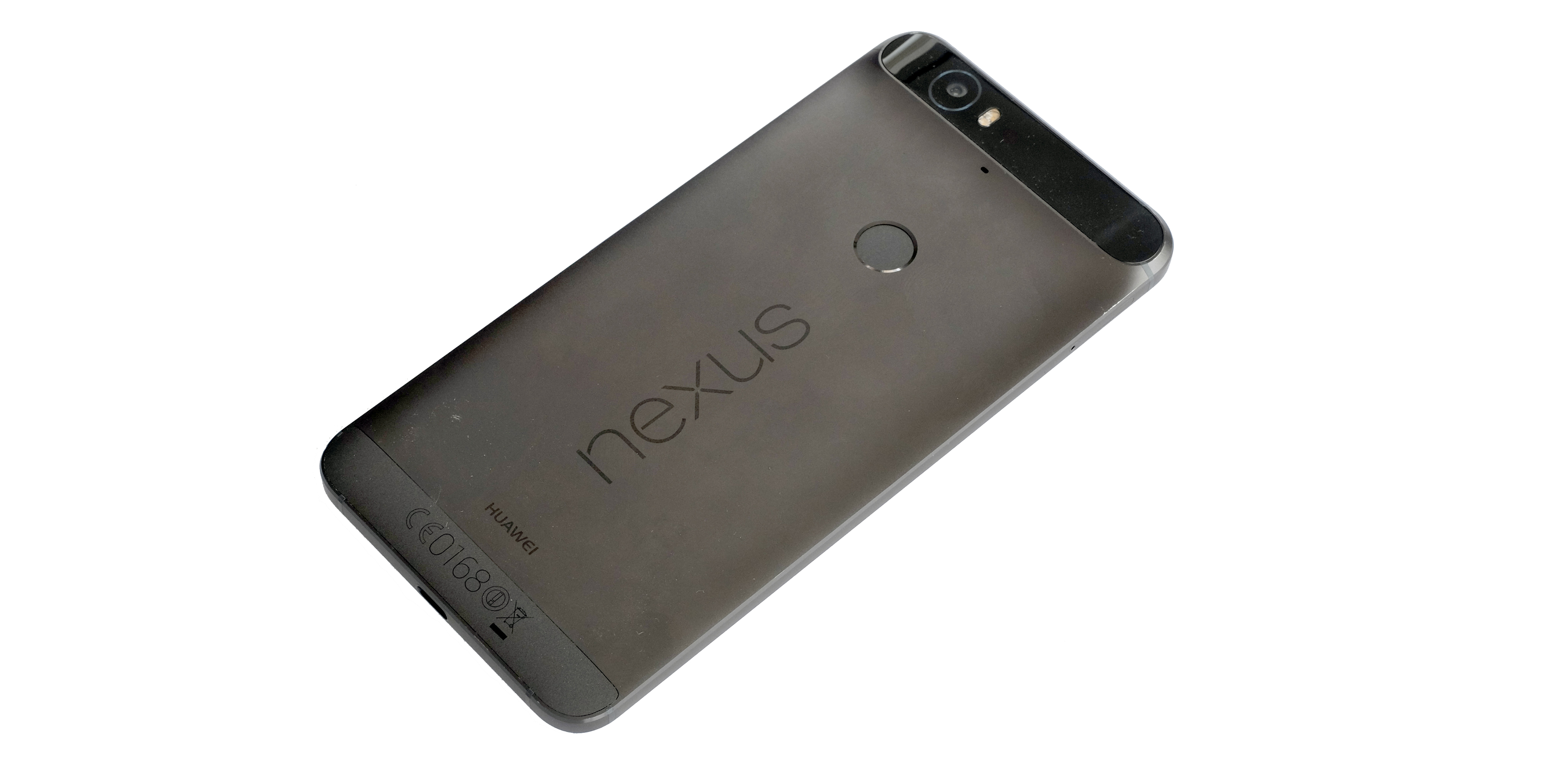
This octo-core 2GHz CPU doesn't perform as well in benchmarks as the Samsung Galaxy S6 family's Exynos processors, but is otherwise among the fastest chipsets available. It is contentious, though, having caused at least some overheating problems in at least some devices that use it.
Google says the Nexus 6P uses v2.1 of the Snapdragon 810, designed to combat this, but the phone still got fairly warm when the display was on, when the phone was downloading data over 4G and even when the processor was working at something only moderately taxing.
It does not run as cool as the iPhone 6S or Galaxy S6, but is nowhere near as prone to running hot as the Sony Xperia Z3+ either - we didn't see a single overheating warning during testing.
Software: Android 6.0 Marshmallow
Hardware is only ever part of the story of a Nexus device. The Nexus 6P mission statement is to show off Android 6.0 Marshmallow with up-to-date hardware, free of any manufacturer alterations.
We've delved into Marshmallow in more detail elsewhere, but there's one detail worth mentioning here even if it's strictly speaking not part of Marshmallow at all. Google has committed itself to releasing monthly security updates for Android, with Lollipop supported in addition to Marshmallow. Nexus devices like the 6P should receive these promptly while Samsung and LG have signed up to the monthly scheme, those manufacturers have noted that security updates will still be subject to mobile network approval.
Casing
The Nexus 6P has the advantage of being able to spread what little heat it does generate across its rear more than some other phones, as it has a highly conductive aluminium frame. It comes in grey, white and silver finishes, and its slightly narrower width (compared to the Nexus 6) helps it avoid the worst of the finger-stretching girth factor of its predecessor.
There's a slightly awkward-looking bump of glass at the top that tarnishes its appearance a little, but the Nexus 6P is an expensive-feeling and generally good-looking phablet overall.
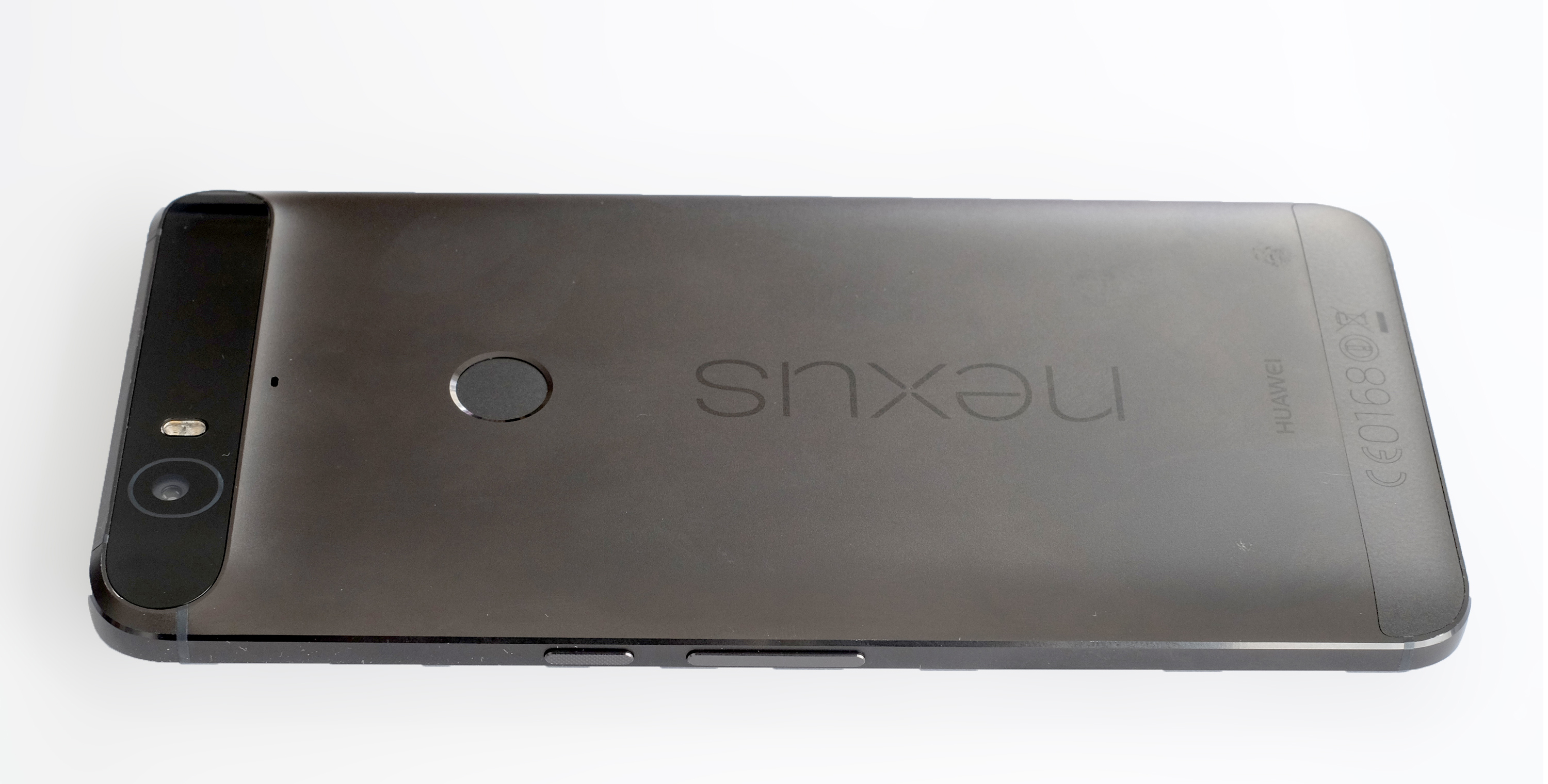
A 449 starting price means this isn't an unaffordable phone either. And while, like all Nexus devices, storage is not expandable, Google has priced storage upgrades far more reasonably than Apple or Samsung. Above the 449 32GB version, a 64GB Nexus 6P costs 499, and the 128GB 579. The top model is 210 cheaper than the 128GB iPhone 6S Plus.
The Nexus 6P doesn't have any frivolous extras such as an IR transmitter, but what hardware extras it does include are of high quality. It has a pair of front-facing stereo speakers that are only slightly less powerful-sounding than the standard-setting HTC One M9 BoomSound pair. Plus there's an excellent fingerprint scanner on its rear.
Fingerprint reader
Like the also-Huawei-made Honor 7, the Nexus 6P has a small fingerprint scanner sitting roughly where your index finger naturally lands on the back of the phone. It is extremely fast and accurate, and can cope with slightly wet fingers much better than many other phones.
Compared to the Honor 7's already fast and accurate fingerprint reader, we found the Nexus 6P's to be consistently even more accurate.
Version 6.0 Marshmallow is the first version of Android to support finger scanners natively. As standard it'll unlock your phone and can be used to validate Google Play purchases. However, with a standard API available it will likely be used in hundreds of apps within the next few months.
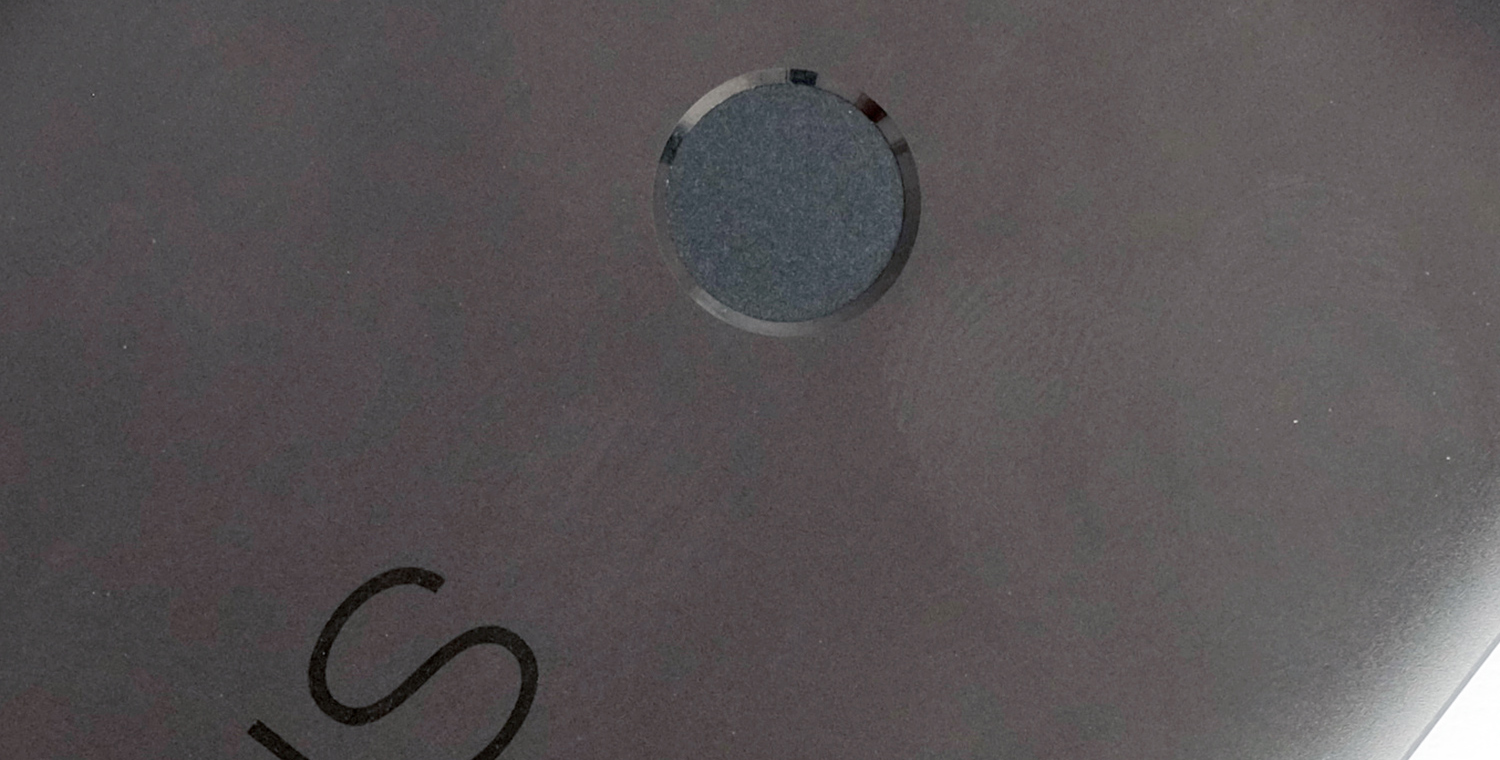
Google says "fingerprint data is stored securely and never leaves your device," that the data is encrypted, and as standard Marshmallow is fully encrypted on top of that. The benefit of the standardised API is that your fingerprint data itself is never actually shared with any apps using the scanner. They will instead receive a tokenised version instead.
Battery Life
To help offset the Nexus 6P's large screen, it has a large 3480mAh battery. To access it you'd need to dismantle the phone as, like all recent Nexus devices, it's not designed to be user-replaceable.
It provides good if not truly remarkable stamina. When left browsing the web while music plays in the background, the Nexus 6P lasted seven hours 50 minutes. That's solid but predictably the Moto X Play, which has both a larger battery and a lower-resolution screen, lasted two and a half hours longer. When playing an H264 video on loop it lasts for 10.5 hours, again a fair result but the Moto X Play once again lasted two hours longer.
In general use the Nexus 6P comfortably lasts a full day with moderately intense use. However, a daily charge is still likely to be needed. Android 6.0 M makes some improvements to battery life, but these appear to focus on using less power in standby rather than active use. For more aggressive power saving there is a Battery Saver mode, but this continues to be an emergency-only' setting, turning the top and bottom of the display orange.
The Nexus 6P is among the first devices to use a USB Type-C port rather than the more common Micro USB. The benefit is that it's reversible and, in this case, the included 15W charger gets you from a flat battery to 100% charge in two hours.
However, annoying drawbacks include not being ableto charge from your computer or even transfer photos to a laptop over a cable because the included cable uses USB-C at both ends. It is perhaps a little too forward-thinking for its own good in this case. A USB-C to USB cable is the must-have accessory for any Nexus 6P owner.
Verdict
The Nexus 6P is an excellent phone to showcase Android 6.0 Marshmallow. Thanks to well-executed features at a fair price, the Nexus 6P is one of the best large-screen Android phones around.
However, with phones like the LG G4 and Samsung Galaxy S6 already dropping significantly in price at many retailers, the Nexus 6P isn't quite as outstanding value as other Nexus devices, even with its more recent price drop.
This review was originally published on 10/12/2015 and has since been updated (most recently on 25/05/2016)
Verdict
High quality throughout, the Nexus 6P is a good showcase for Android 6.0 Marshmallow
OS: Android 6.0 Marshmallow
Display: 5.7in, 2560 x 1440 AMOLED (515ppi)
Processor: 2.0GHz + 1.55GHz Qualcomm Snapdragon 810 eight-core
RAM: 3GB
Storage: 32/64/128GB, non-expandable
Camera: 12.3-megapixel with autofocus, flash, eight-megapixel front-facing
Connectivity: 802.11 a/b/g/n/ac, Bluetooth 4.2 LE, NFC, 4G, GPS/GLONASS, nano SIM
Ports: USB 2.0, Type-C
Dimensions: 159 x 78 x 7 mm (HxWxD)
Battery: 3450mAh
Weight: 178g
Get the ITPro daily newsletter
Sign up today and you will receive a free copy of our Future Focus 2025 report - the leading guidance on AI, cybersecurity and other IT challenges as per 700+ senior executives
-
 ‘Phishing kits are a force multiplier': Cheap cyber crime kits can be bought on the dark web for less than $25 – and experts warn it’s lowering the barrier of entry for amateur hackers
‘Phishing kits are a force multiplier': Cheap cyber crime kits can be bought on the dark web for less than $25 – and experts warn it’s lowering the barrier of entry for amateur hackersNews Research from NordVPN shows phishing kits are now widely available on the dark web and via messaging apps like Telegram, and are often selling for less than $25.
By Emma Woollacott Published
-
 Redis unveils new tools for developers working on AI applications
Redis unveils new tools for developers working on AI applicationsNews Redis has announced new tools aimed at making it easier for AI developers to build applications and optimize large language model (LLM) outputs.
By Ross Kelly Published
-
 Google layoffs continue with "hundreds" cut from Chrome, Android, and Pixel teams
Google layoffs continue with "hundreds" cut from Chrome, Android, and Pixel teamsNews The tech giant's efficiency drive enters a third year with devices teams the latest target
By Bobby Hellard Published

